On our second day in Athens, we went to see the Acropolis. The Acropolis is a hill in the centre of Athens, which was the centre of religious life during the Greek classical period. Most of the buildings that can still be seen date from between 450 BC and 400 BC. There were building on the Acropolis prior to 450 BC, however, all these buildings were leveled during the Persian occupation of Athens around the year 450 BC. For more information on the Persian conquest of Athens and the siege of the Acropolis I refer the reader to the wonderful Histories written by Herodotus.
When we walked up the hill the first two structures that were mostly intact were the entrance structure of the Acropolis and the Temple of Athena Nike. Here’s a picture of the Temple of Athena Nike.
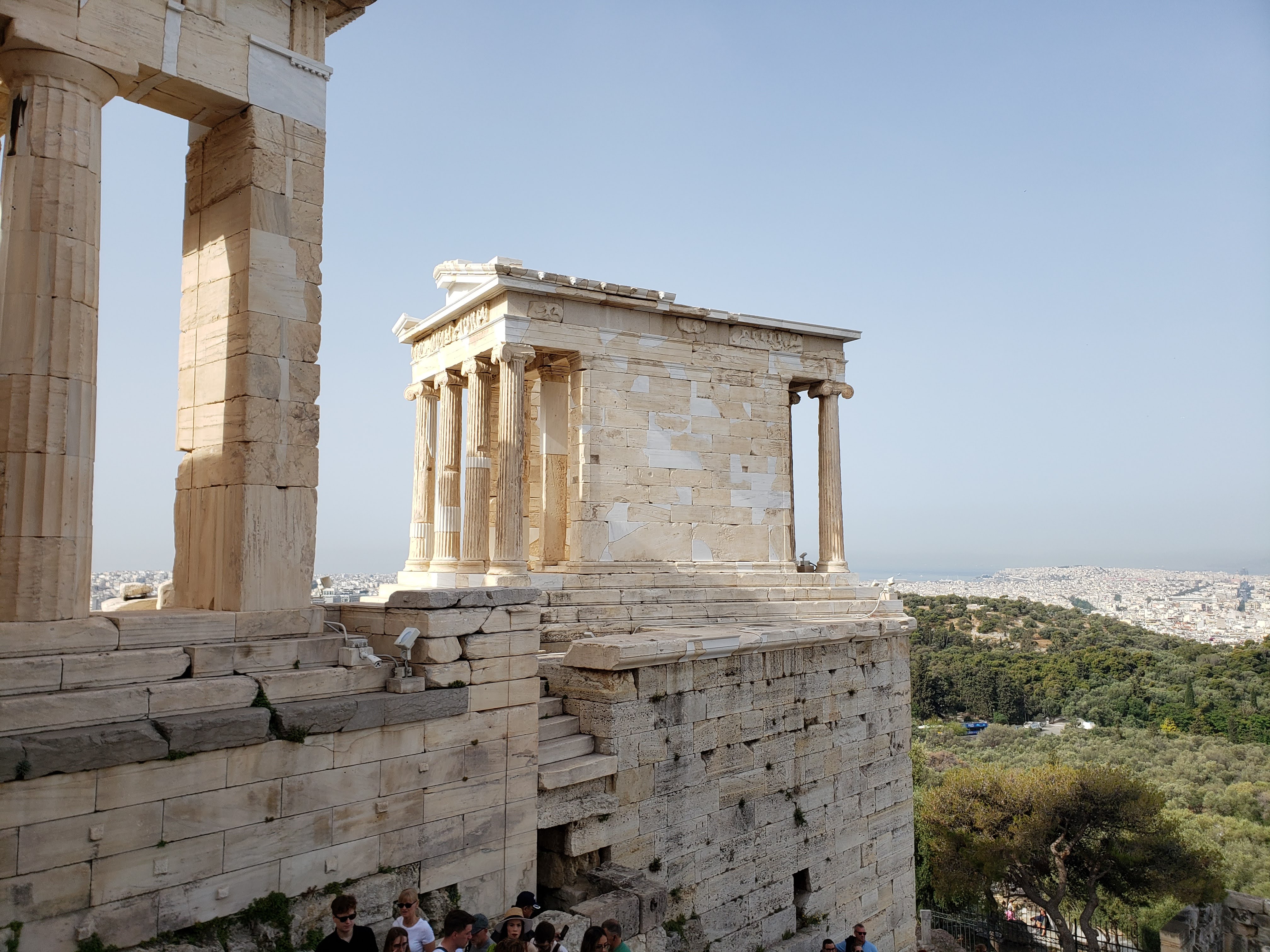
Nike was the Greek god of victory in battle, but was also sometimes depicted as being an attribute of another god, such as in the case of the Temple of Athena Nike. In classical times there was a statue carved into the inside wall depicting Athena with the attribute of Nike bending down to undo her sandal. There were also carvings that adorned the outside wall. The statue and the carvings are currently being preserved in the Arcropolis Museum.
On the choicest location of the Acropolis was the most impressive building, the Parthenon. The Parthenon is a large rectangular temple. All side are supported by massive columns. In Classical Grecian times there was gigantic statue of Athena in the centre of the temple. The original is lost, but we later saw a miniature version of the statue when we went to the Athenian Archeological Museum.
From our guidebook I learned that there are many geometric oddities to the Parthenon, including the fact that none of the columns are perfectly vertical, they all are slightly angled towards a point in the centre of the building. Also, the spacing of the columns differs depending on their proximity to the corner with the columns spaced closest together near the corner. I tried to confirm these facts with my eyes. I could see the spacing did indeed increase away from the corner, but was unable to see that the columns were not perfectly vertical. I would not have noticed even the spacing, if I had not read about it in the guide book. These geometric oddities were used to make the Parthenon appear perfect to the eye. Human perception is deceiving. Ancient Greeks knew that if the columns were perfectly spaced they would appear to be irregular when looking at the Parthenon from the front. Here’s a picture I took of the Parthenon that also shows how many people were roaming the site and a photo of us in front of the Parthenon.
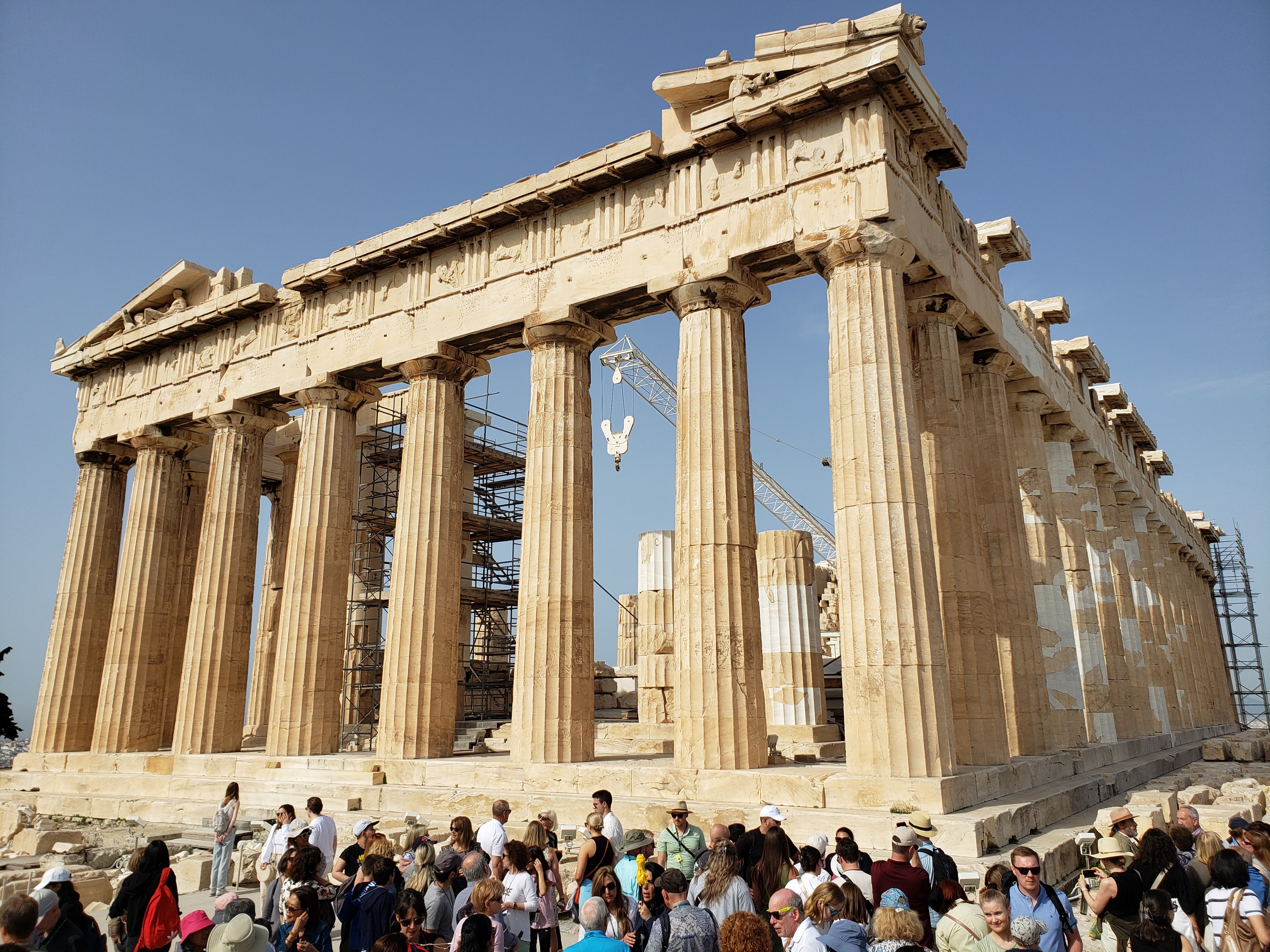
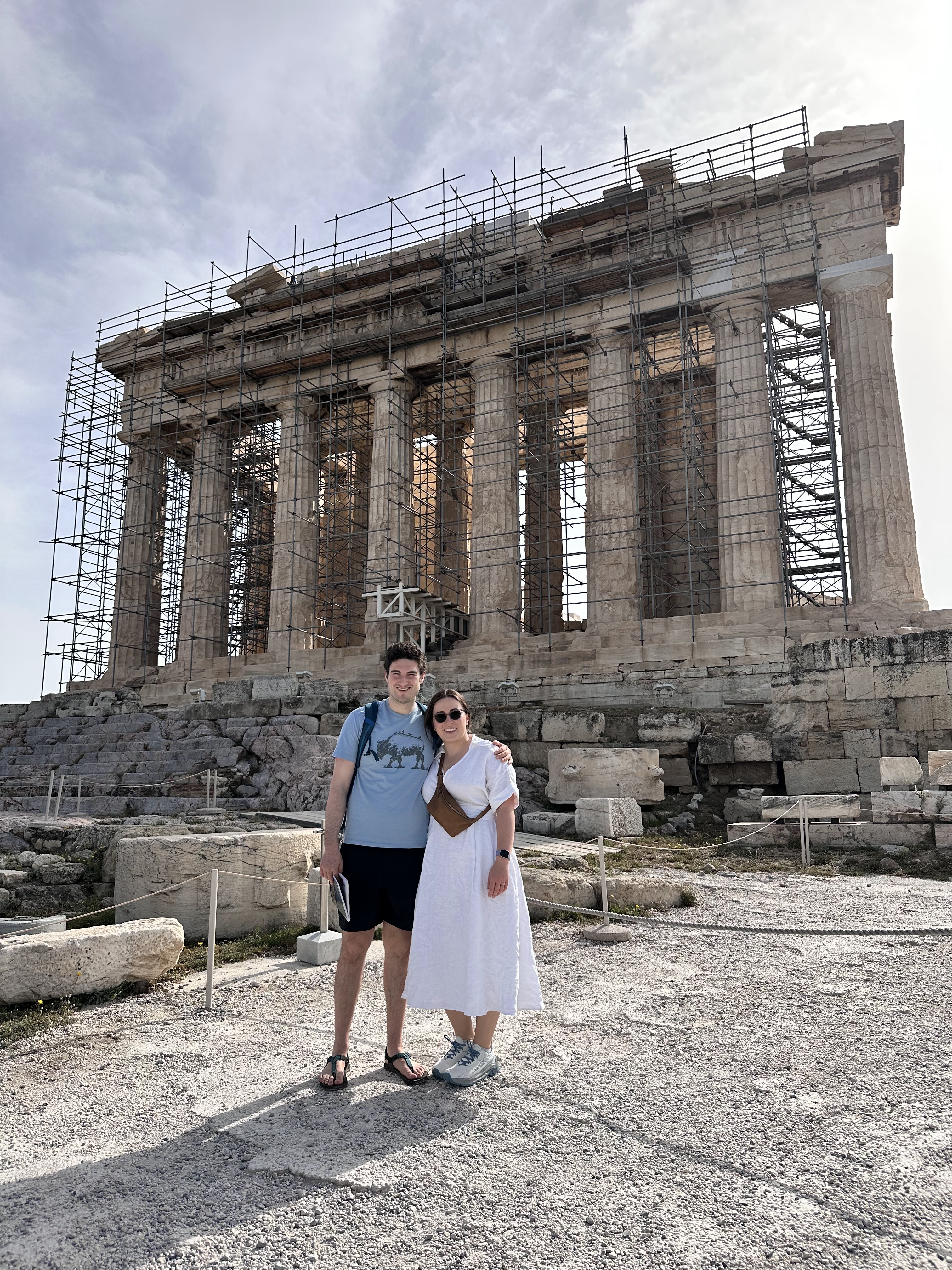
A general theme of the Acropolis is that, for their preservation, the best artifacts have been removed and taken to the Acropolis Museum. The Caryatids are a special case of this. These are statues of temple maidens that were used to support a balcony of one of the temples. Most of these have been taken to the Acropolis Museum, however one of them has been taken to the British Museum. The statues on the Acropolis are recreations. The additional benefit of having recreations of the Caryatids is that there’s no missing spot for the Caryatid that was taken by the British.
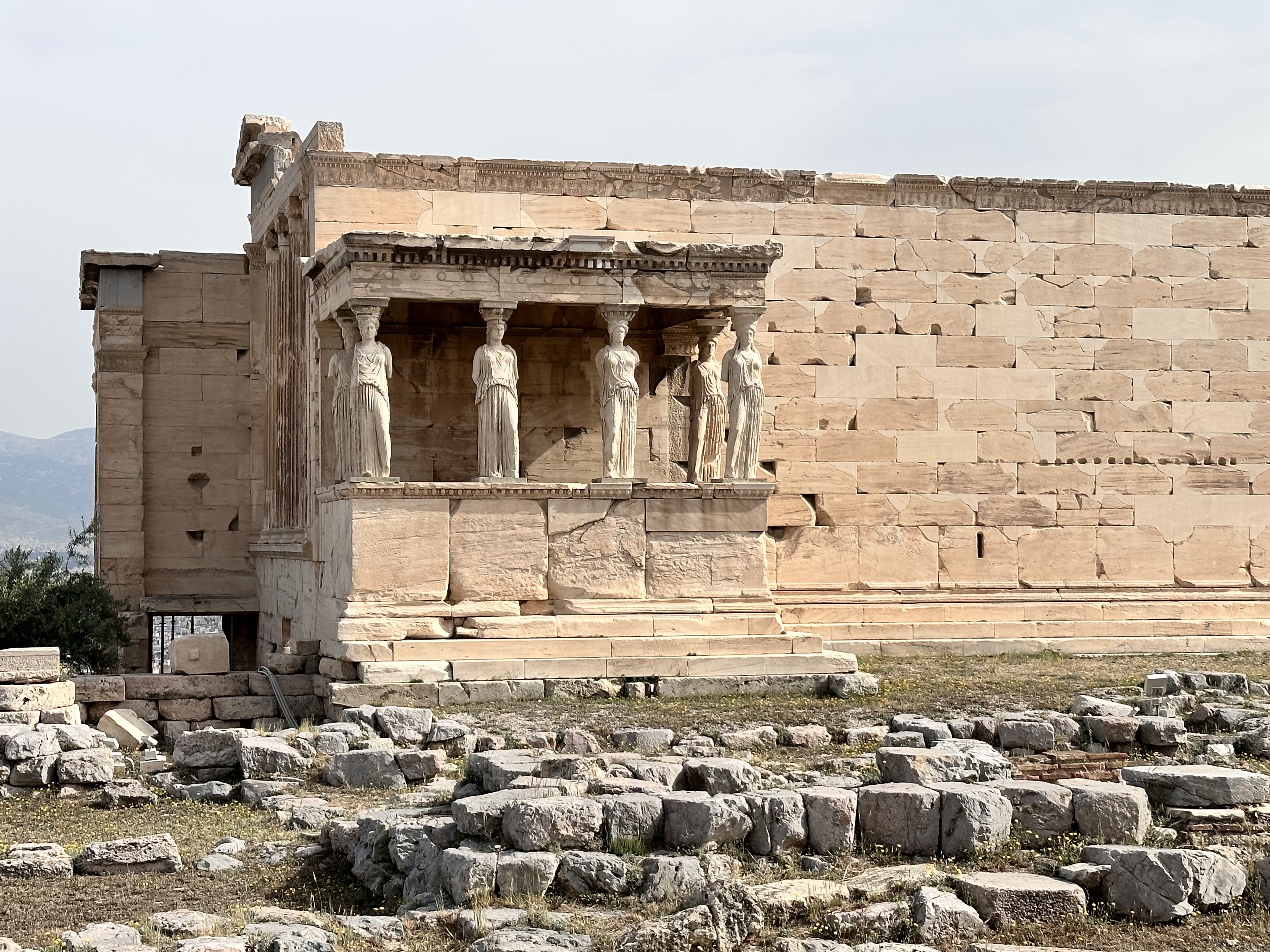
Later that day, Lizy was quizzed by a group of school children about her time in Greece. The questions were mostly what you would expect: Do you like Greece?, What do you think of Greece?, etc. At the end of the quiz the children threw her a curve ball by asking her if she believed the British should return the missing Caryatid to Greece. She of course said she thought it should be returned. She said it was horrible that they had stolen it. What kind of person would tell the children, “No, I think the British are taking better care of the Caryatid than you would.” Later that day I thought about it further.
These artifacts are 1500 years old. Does it really make sense that Greeks should still be able to lay moral claim to an artifact from that long ago. You would never put moral blame on modern Greeks for the massacre of Troy or put blame on modern Iranians for the destruction of the Acropolis 2500 years ago. So by what basis can we attribute ownership of these ancient artifacts to modern Greeks? Still, I can’t imagine one not saying the British did an evil act by stealing the statue.
For people with mobility issues there was a glass elevator that ran vertically along the cliff side of the Acropolis. Lizy remarked, “I’m glad we walked up, that elevator looks really scary.” According to Herodotus when the Persians were laying seige to the Acropolis, to avoid the Athenian defenses a group of Persians climbed onto the Acropolis via the cliff. In some sense I guess the elevator visitors get the Persian experience of the Acropolis.
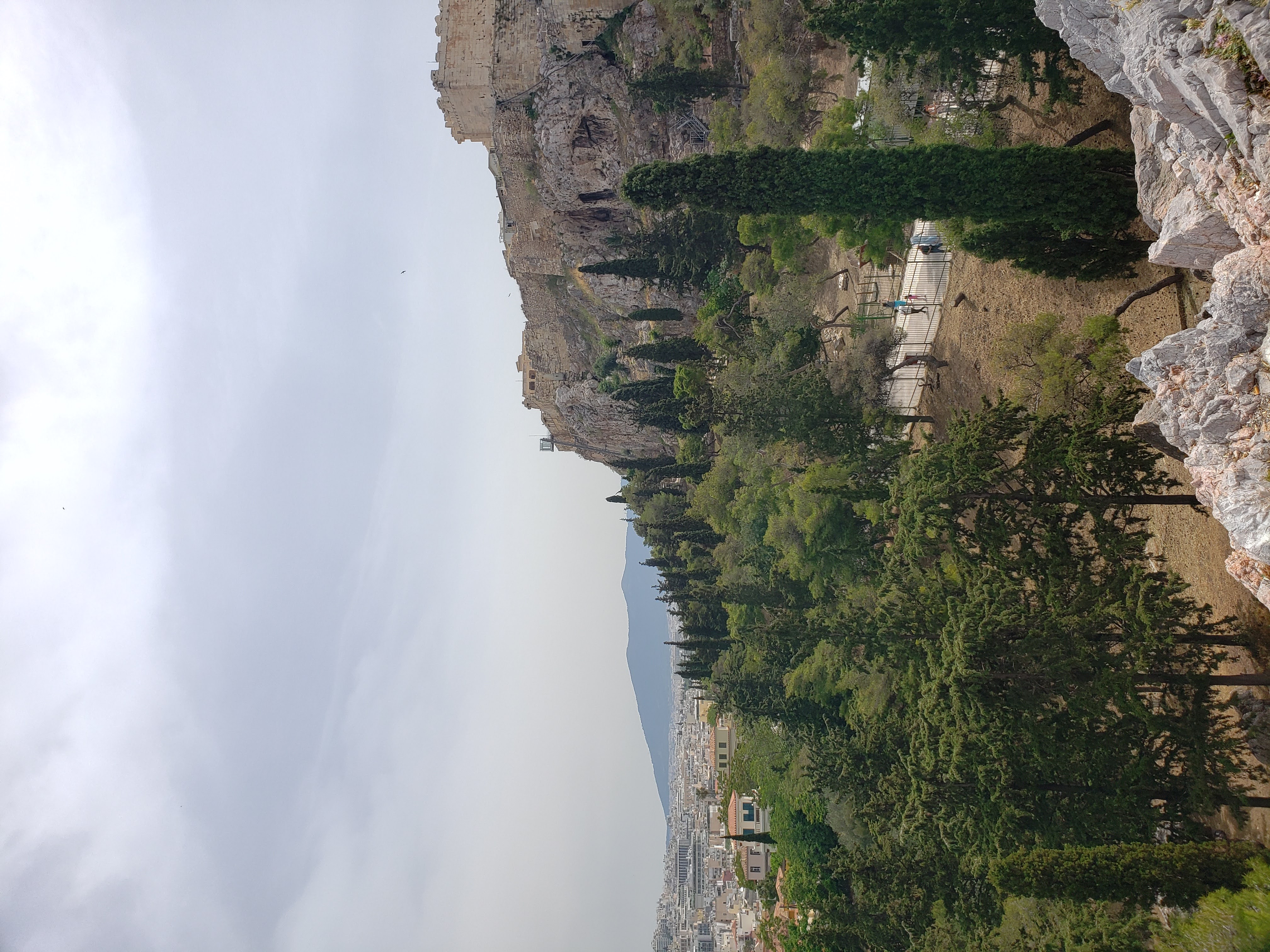
Near the glass elevator there was an olive tree. The tree is representative of the olive tree that stood on the Acropolis during antiquity. The first olive tree on the Acropolis, according to myth, was given to Athens by Athena. At the time Athena and Poseidon were competing for the hearts of Athens to determine who would be the cities patron god. Athena gave the citizens the first ever olive tree, while Poseidon gave the citizens water. Of course Athens picked Athena to be their patron god, as the fruit of the olive tree had a myriad of uses that no other commodity could be substituted, whereas water literally fell from the sky.
The mythical tree gifted by Athena was not present on the Acropolis during the Athenian Golden Age. When the Persians raised the Acropolis they destroyed the original tree. However, according to Herodotus, the very next day the sprout of a new olive tree could be seen in the exact same location as the old one. And finally in modern times someone planted this current olive tree as a symbol of the two great olive trees that came before it.
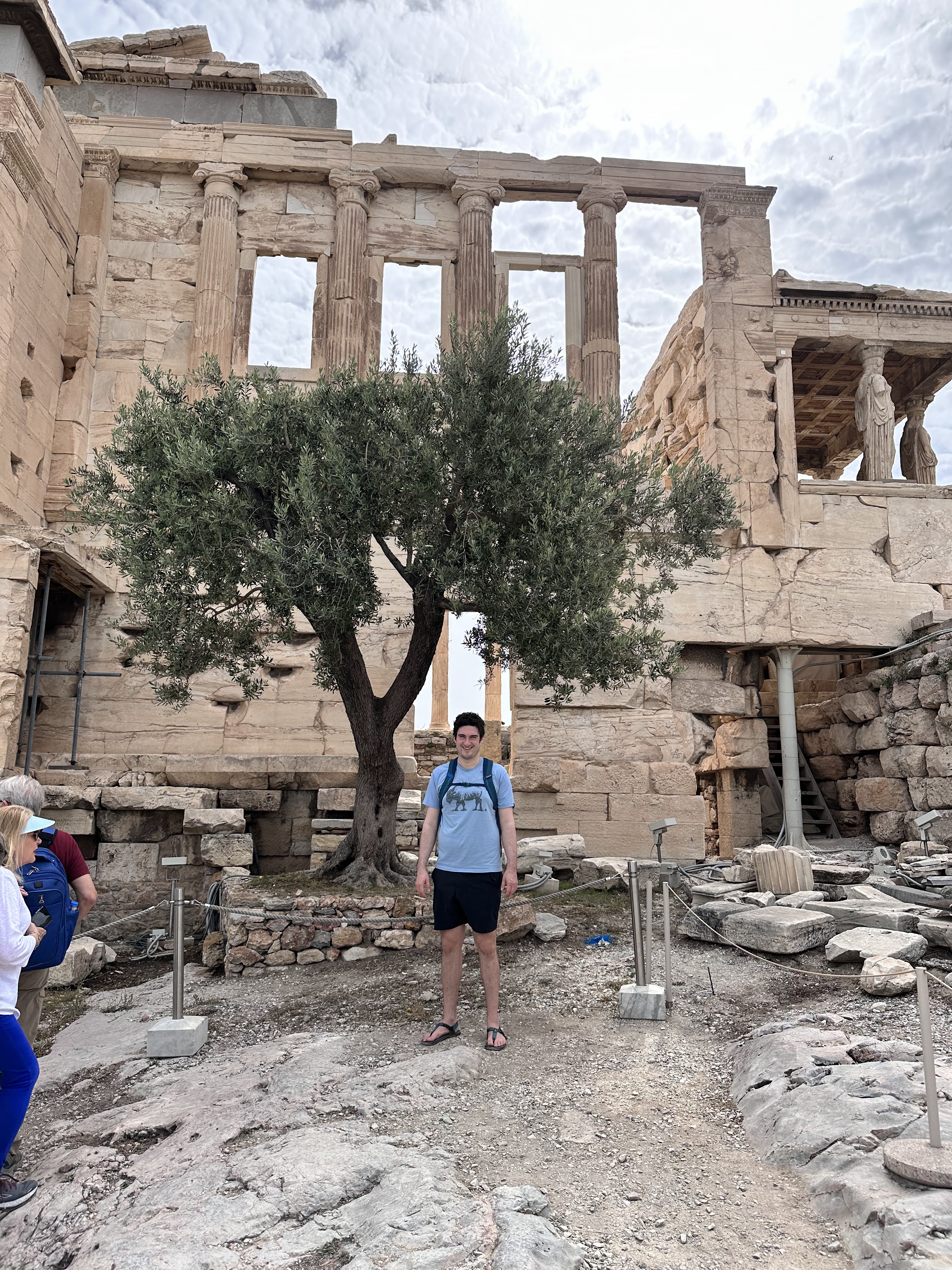
The Acropolis became more and more crowded with tourists during our time there. When we were walking down the stairs the congestion slowed us down to a snail’s pace. A tour guide got so fed up she started running up and down the middle of the staircase pushing people against the railing and giving stern talks to prevent people from taking photos at choke points.
We saw a turtle as we walked out of the Acropolis on the south slope. Cats were everywhere on the Acropolis and they were always going into the fenced off sections as if the rules didn’t apply to them.
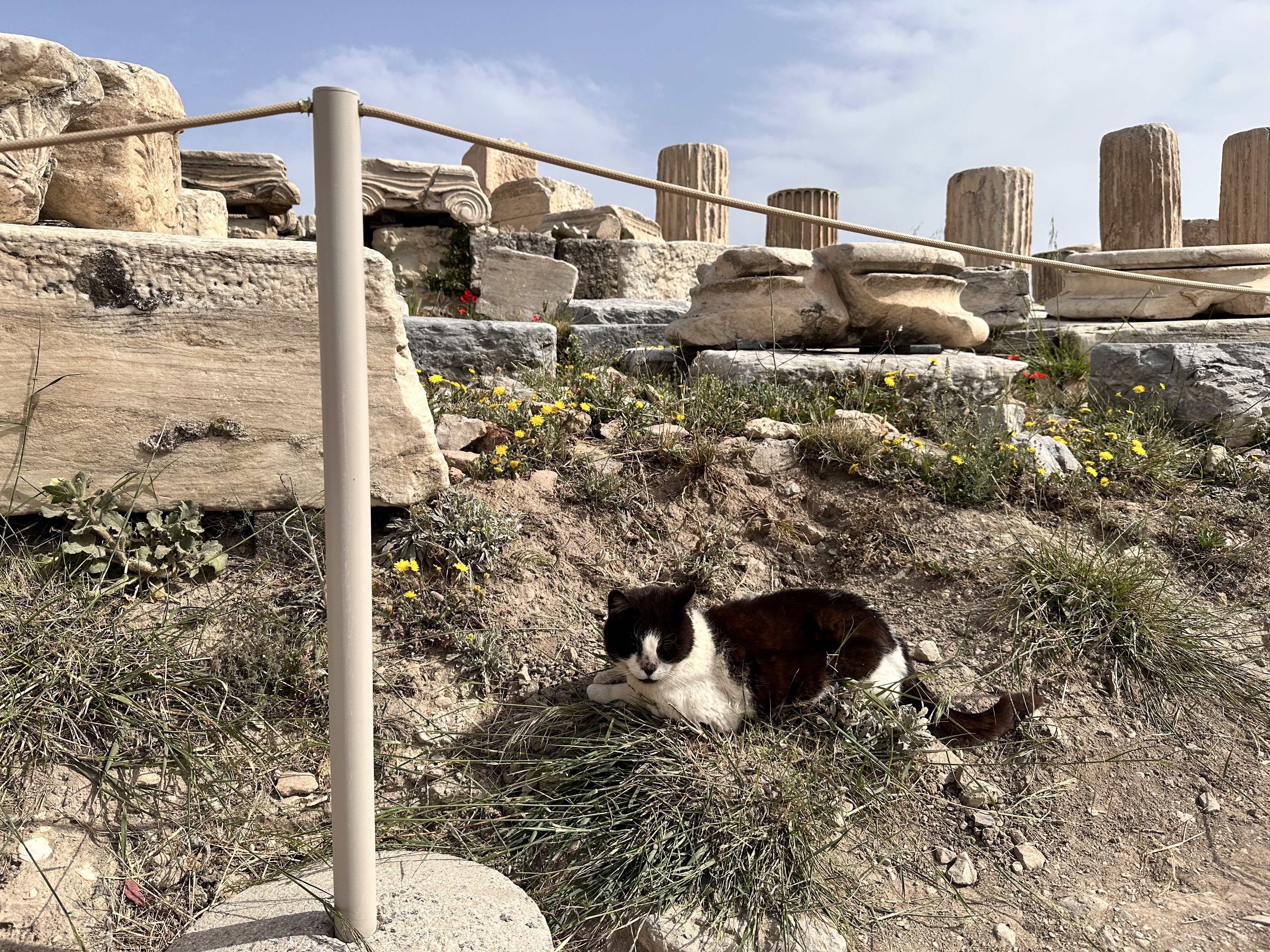
At the bottom of the hill there was a small outdoor gathering of statues. There was a small roof, so they wouldn’t be damaged by the elements. I liked this one statue that looked like the evil pirate from the original Pirates of the Caribbean.
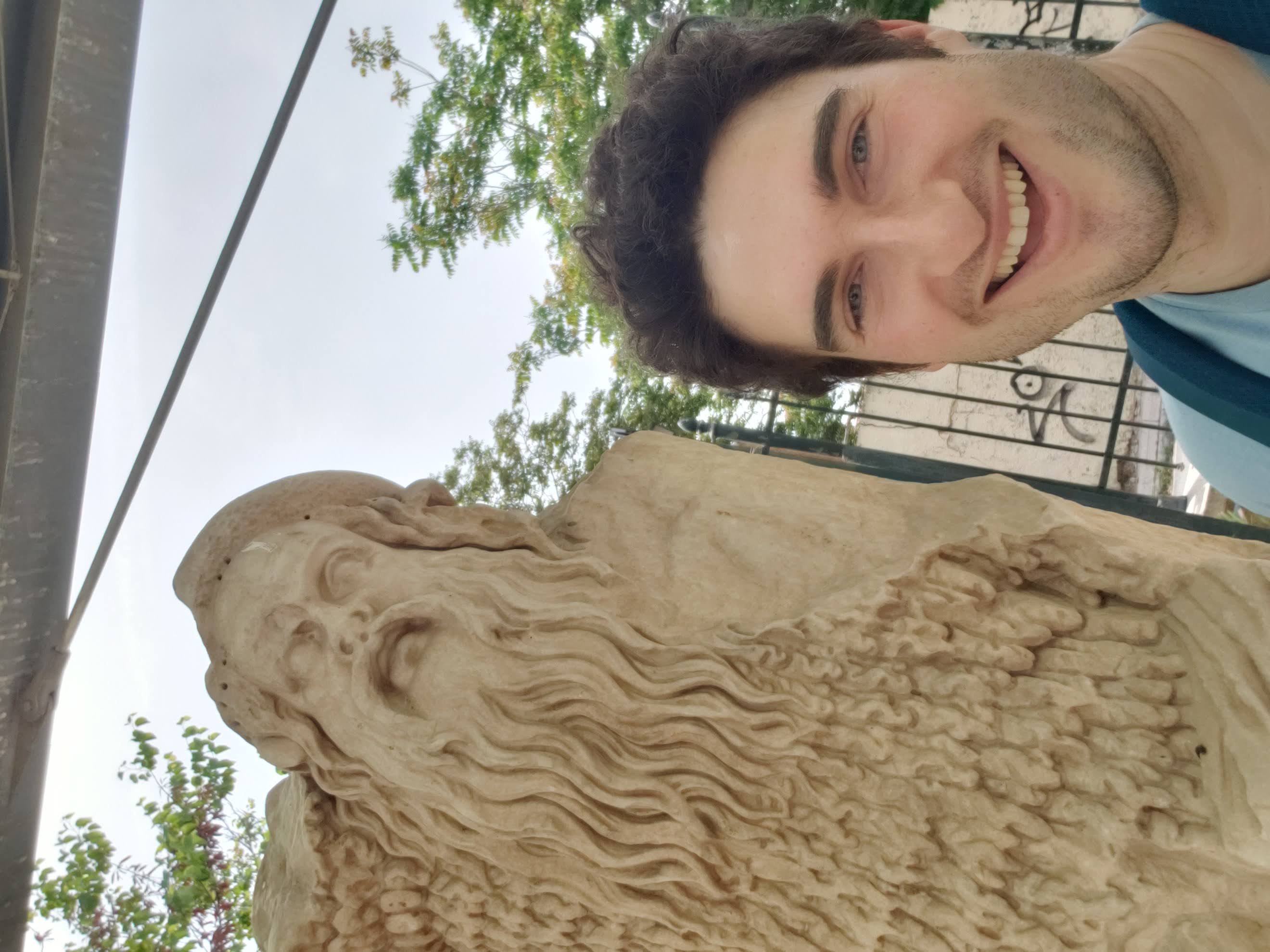
After visiting the Acropolis, we hunted out the location of a photo of Lizy’s mom. In the background of the phot we could see what looked like the Theatre of Dionysos. Unfortunately the theatre was under construction and access to the surrounding area was limited. We considered giving up. But then, we turned around a corner and the location, as if by magic, appeared before us.
It was a little bit of bruh hah hah getting the photo. There were these two older women taking photos of each other very slowly. Lizy kept trying to get them to move out of the way, but they just persisted in taking photos. When it looked like they might finally move, a truck containing construction supplies drove through the photo spot. Then after the truck drove into the background of the shot, the old women kept taking photos. In the end we got a good photo though.
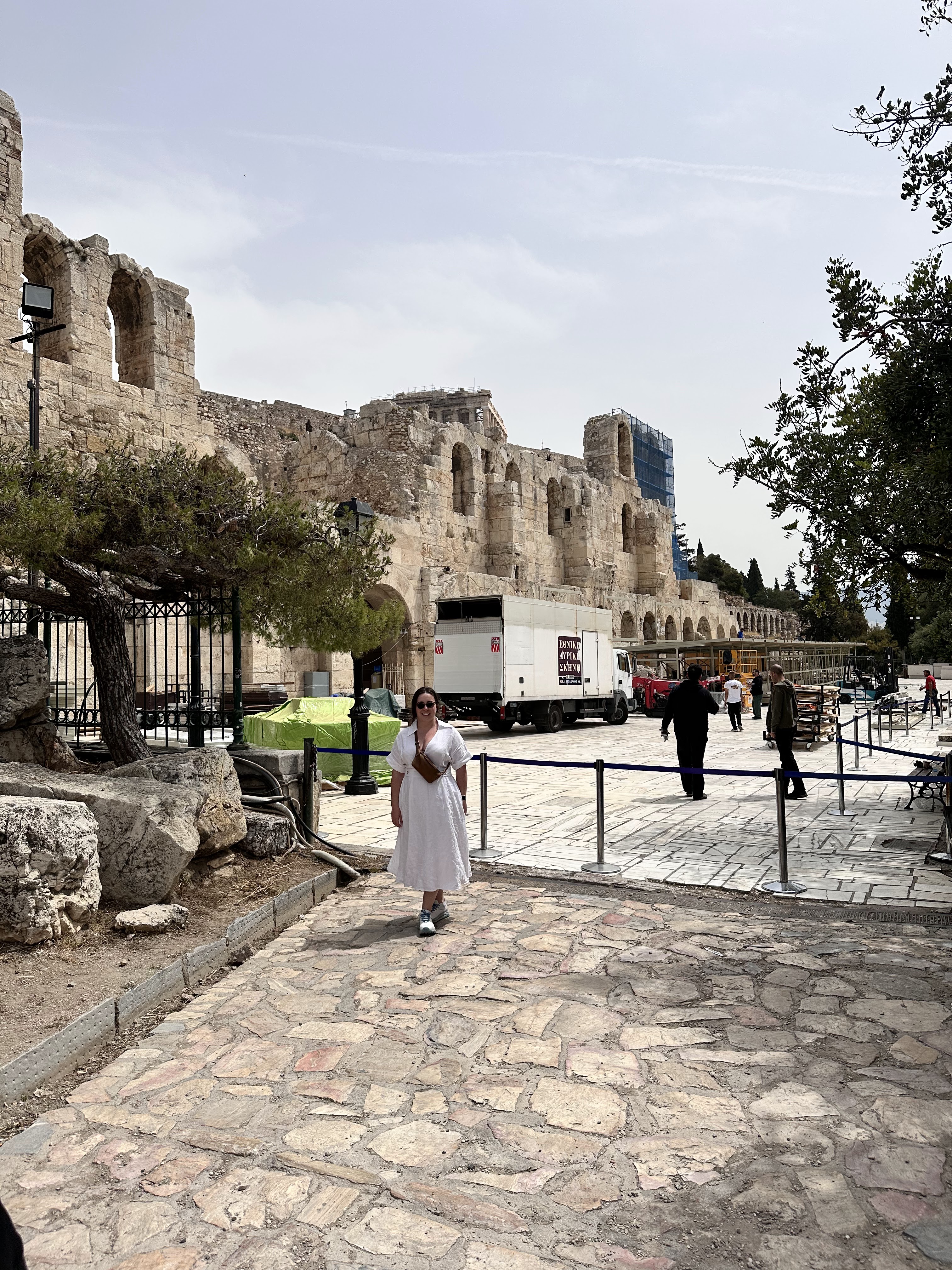
Afterwards, we walked to the Plaka for lunch. The restaurant we ate at had a plaque from Jamie Oliver. It was in Greek, so I wasn’t sure what it was about. Then we walked through some of the other ancient sites: The Roman Agora, Hadrian’s Library, and the Classical Greek Agora. Most buildings were destroyed to their foundations. It was interesting to see, but I’m not including any photos here for brevity.
Later that day I called my mom to wish her a happy Mother’s Day. She was happy I called. She told me she had decided to return the fridge she just got to get a different model, a Bosch. Afterwards, I went up to the roof to meet Lizy. She had gotten a flight of wines from across Greece and was discussing the wines with two older women form Kansas sitting beside her on reclining pool chairs.
“We know you have good wine in California, but we don’t need to go all the way to California for good wine there’s 20 wineries near where we live in Kansas. We go visit them all the time. Don’t we?”
Her friend nodded.
“Kansas is such a great place. You should move to Kansas.”
“The one thing is I like to go skiing,” said Lizy as if she was seriously considering moving to Kansas.
“You’re 6 hours from Denver. You could go for a long weekend. You can buy a 3500 square foot house for 350 000 dollars. I watch house hunters all the time, so I know that doesn’t buy you anything in California.”
She wasn’t wrong. The pool wasn’t very deep, but it had a view of the Acropolis. I waded in the pool looking out across the city.